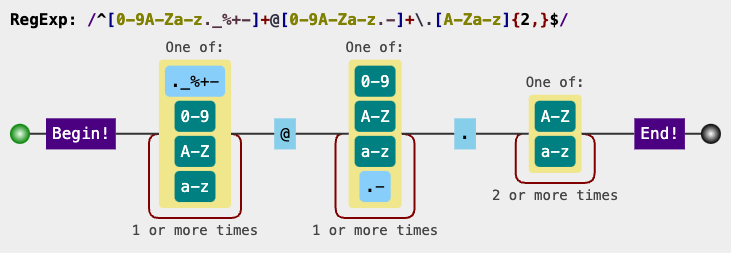· Heybounce · Guides · 5 min read
What Are Catch-All Domains and How They Impact Email Deliverability
Catch-all domains accept all emails, which can lead to higher bounce rates and deliverability issues. Learn how to manage them and protect your sender reputation.

When working with email marketing, outreach campaigns, or even managing customer data, you may encounter catch-all domains. These types of domains can pose unique challenges for your email deliverability. While they might seem like a quick solution to avoid bounced emails, they can actually have a significant impact on the success of your campaigns.
In this post, we’ll dive into what catch-all domains are, how they work, and the ways they can affect your email deliverability rates.
What Is a Catch-All Domain?
A catch-all domain is configured to accept all emails sent to any email address at that domain, regardless of whether the specific email address exists or not. Essentially, a catch-all domain will “catch” all incoming emails to that domain, even if the email address is invalid or mistyped.
For example, if the domain example.com is set up as a catch-all domain, any email sent to [email protected], [email protected], or [email protected] will be accepted by the mail server, even if those specific email addresses are not actually configured.
How Does a Catch-All Domain Work?
A company or domain administrator configures a catch-all email server so that it accepts any emails sent to the domain. While the mail server will receive the message, it doesn’t guarantee that the email will reach a real person or a functional inbox.
Catch-all domains are often used by businesses to ensure that they don’t miss any emails, even if the email address is typed incorrectly. However, this setup can be a double-edged sword for email marketers.
How Catch-All Domains Impact Email Deliverability
While catch-all domains might seem like a safety net for ensuring that emails are delivered, they can present several challenges when it comes to email deliverability. Here are a few ways they impact your email campaigns:
1. Higher Bounce Rates Over Time
Although catch-all domains initially accept emails, this doesn’t mean the emails are valid. Over time, the domain’s server may reject emails after determining that the address doesn’t exist or is no longer in use. These delayed bounces can occur hours or even days after the email is sent, leading to inflated bounce rates.
2. Increased Risk of Spam Traps
Catch-all domains can sometimes house spam traps, which are email addresses used to identify spammers. Sending emails to a spam trap can damage your sender reputation, resulting in your emails being marked as spam by email service providers (ESPs).
Since you can’t always tell if an email address within a catch-all domain is legitimate, there’s an increased risk of hitting a spam trap, which can harm your deliverability and reputation.
3. Difficulty Verifying Email Addresses
One of the main problems with catch-all domains is the challenge of verifying whether specific email addresses are valid or not. Traditional email verification tools can confirm whether a domain is live, but they often cannot verify if a particular email address at a catch-all domain is legitimate.
This leads to uncertainty about whether your emails are reaching active inboxes, making it harder to maintain a clean and valid email list.
4. Reduced Engagement Rates
When you’re unsure whether the email addresses at a catch-all domain are valid, you’re likely to see lower engagement rates. If the emails don’t reach active users, you’ll have fewer opens, clicks, and conversions. Over time, low engagement can hurt your overall campaign performance and lead to deliverability issues.
How to Handle Catch-All Domains in Your Email Campaigns
While catch-all domains present challenges, there are ways to manage and mitigate the risks associated with them:
1. Segment Catch-All Domains
One strategy is to segment emails from catch-all domains into a separate list. This allows you to track their performance separately from your verified emails and take a more cautious approach. For example, you can send fewer emails to this segment and monitor the results closely.
2. Use an Email Verification Tool
While email verification tools may not be able to confirm the validity of an address at a catch-all domain, they can still help identify which domains are catch-all. Knowing which addresses belong to catch-all domains allows you to treat them differently and adjust your email strategy accordingly.
3. Monitor Bounce and Engagement Rates
Keep a close eye on your bounce and engagement rates for catch-all domains. If you notice a spike in bounces or low engagement, you may want to limit the emails sent to these domains to protect your sender reputation.
4. Engage with Caution
When sending emails to addresses at catch-all domains, consider taking a conservative approach. Send fewer emails, and focus on high-value content that encourages interaction, increasing the chance of engagement and reducing the risk of spam complaints.
Conclusion
Catch-all domains can make it difficult to maintain a high-quality email list and protect your deliverability rates. While they help ensure that no email is lost due to misspellings or mistyped addresses, they also introduce risks such as higher bounce rates, spam traps, and poor engagement.
As a best practice, use email verification tools to identify catch-all domains, segment your email lists accordingly, and monitor engagement to minimize the negative impact on your email deliverability. By approaching catch-all domains with caution, you can protect your sender reputation and optimize your email marketing efforts.





